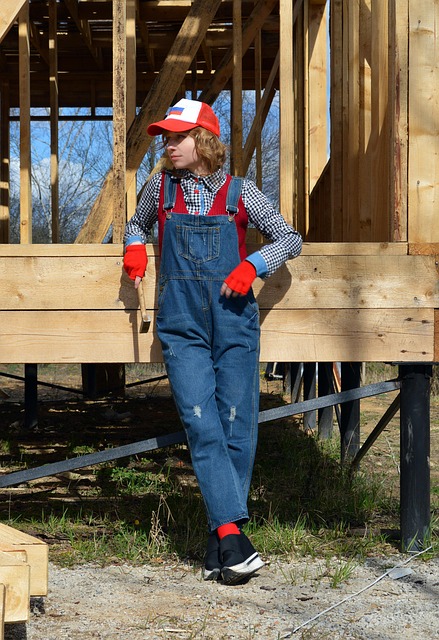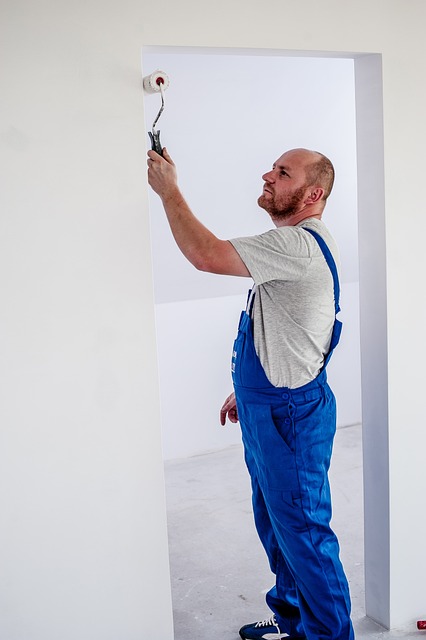Concrete cracks in residential foundations can range from minor aesthetic issues to serious structural problems caused by various factors. Key types include hairline, widening, vertical, horizontal, and diagonal cracks. Promptly addressing these cracks through professional Residential Foundation Repair services is crucial to prevent further damage. Assessment is key, focusing on crack size, pattern, location, and depth to prioritize repairs targeting critical areas like windows/doors or uneven settling. Proven methods like epoxy injections, carbon fiber wrapping, and hydraulic cement offer effective solutions. DIY kits are suitable for minor cracks, but extensive or structural cracks require professional expertise. Investing in concrete crack repair is strategic, ensuring long-term stability and cost savings. Regular inspections and proactive measures like proper drainage and clearing debris are essential to prevent cracking.
Concrete cracks in residential foundations are a common concern, but understanding their causes and types is key to effective repair. This article guides you through the process of assessing damage, exploring popular repair methods for foundational issues, and determining whether DIY or professional intervention is best. We delve into longevity, cost-effectiveness, and preventive measures to ensure your home’s foundation remains strong. Learn how to tackle concrete crack repair with confidence and save on costly structural damages in the long run through expert advice on residential foundation repair.
Understanding Concrete Cracks: Causes and Types in Residential Foundations

Concrete cracks in residential foundations can range from harmless aesthetic issues to serious structural problems. Understanding the causes and types of these cracks is essential for effective concrete crack repair solutions. In many cases, cracks form due to natural settling and movement of the soil beneath the foundation. This process, known as substrate shifting, puts stress on the concrete, leading to cracks over time. Other common causes include improper original construction, poor quality materials, excessive moisture, and extreme temperature fluctuations.
There are several types of cracks that can appear in residential foundations. Hairline cracks, typically less than 1/8 inch wide, are often the earliest signs of foundation problems and may indicate ongoing movement. Cracks that widen or develop at a rapid rate suggest more severe issues. Vertical cracks, horizontal cracks, and diagonal cracks each have distinct causes, with vertical cracks usually resulting from excessive settlement, horizontal cracks from moisture-related expansion, and diagonal cracks from differential settling in different parts of the foundation. Addressing these cracks promptly through professional Residential Foundation Repair services is crucial to prevent further damage and ensure the structural integrity of the home.
Assessing the Extent of Damage: Identifying Repair Priorities

When it comes to concrete crack repair, the first step is a thorough assessment to understand the extent of damage. This involves carefully examining the cracks—their size, pattern, and location—to determine the level of structural integrity compromise. In many cases, especially with residential foundation repair, cracks are not just cosmetic issues but can signal underlying problems that require immediate attention to prevent further deterioration.
Prioritizing repairs based on this assessment is crucial for effective concrete crack repair. Cracks around windows, doors, or in areas revealing signs of uneven settling should be addressed first as they may indicate serious structural concerns. Other factors like the depth and width of cracks also play a role in setting repair priorities, ensuring that each step taken towards residential foundation repair addresses the most critical issues first.
Popular Concrete Crack Repair Methods for Residential Foundational Issues

When it comes to residential foundation repair, addressing concrete cracks is a top priority for homeowners. Fortunately, there are several popular crack repair methods designed to effectively mitigate these issues. One common approach involves using epoxy injections, which fill cracks and joints with a strong, durable material. This method not only stops further damage but also enhances the structural integrity of the foundation.
Another widely adopted technique is carbon fiber wrapping, where thin strips of carbon fiber are applied over cracks to create a reinforced barrier. This eco-friendly solution offers superior strength while allowing for minimal disruption to the surrounding concrete. For larger or more complex cracks, hydraulic cement is often employed. This fast-setting material fills and hardens cracks, providing a long-lasting repair that can match or even exceed the original concrete strength. These methods ensure stability and longevity for residential foundations, addressing potential issues before they escalate.
DIY vs Professional: When to Choose Each for Optimal Results

When it comes to repairing concrete cracks, especially in residential foundation repair, the choice between DIY and professional services is a significant decision. While some minor cracks can be addressed by homeowners with the right tools and knowledge, more extensive or structural damage often requires the expertise of professionals.
For simple, superficial cracks that are primarily cosmetic, a DIY approach might be suitable. Homeowners can find various kits available online or at hardware stores, offering easy-to-follow instructions for repairing small cracks. However, for larger cracks, those affecting structural integrity, or situations where multiple cracks are present, professional intervention is crucial. Residential foundation repair specialists have the training and equipment to handle complex issues, ensuring long-lasting repairs that maintain the safety and stability of your home.
Longevity and Cost-Effectiveness: Evaluating Repair Solutions

Concrete crack repair solutions are a crucial investment for property owners, especially those dealing with residential foundation repairs. When considering different options, longevity and cost-effectiveness should be top priorities. A durable fix not only ensures the structural integrity of your home but also provides a cost-saving solution in the long run.
Evaluating repair methods, such as epoxy injections or carbon fiber wrapping, offers a comprehensive approach to addressing cracks. These modern techniques are designed to withstand the elements and the natural settlement of soil, ensuring stability for years to come. By choosing the right repair solution, homeowners can avoid costly and frequent maintenance, making it a wise investment for any residential foundation repair project.
Preventive Measures: Strengthening Your Home's Foundation Against Cracking

Concrete cracking can be a significant issue for homeowners, often indicating underlying problems with the residential foundation repair. To mitigate this, it’s crucial to implement preventive measures that strengthen your home’s foundation. Regular inspection is key; identifying potential cracks early allows for quick action before they worsen.
One effective strategy involves ensuring proper drainage around your property. Uneven water distribution can exert pressure on concrete, leading to cracks. Implementing a robust drainage system, such as well-designed gutters and downspouts, helps divert water away from your foundation. Additionally, maintaining adequate clearance between the soil and the foundation walls by removing vegetation and debris prevents moisture intrusion, which can weaken the structure over time.
